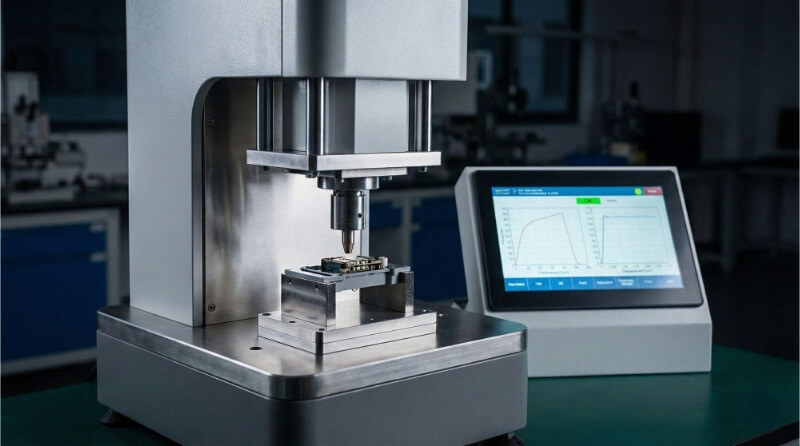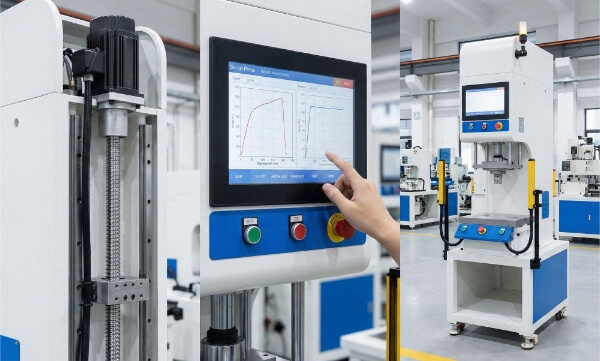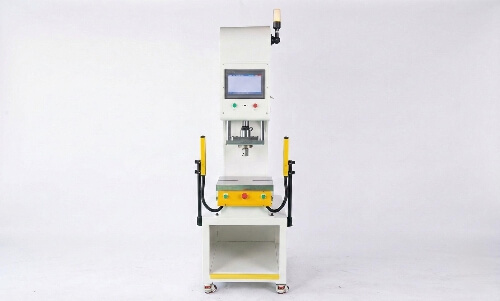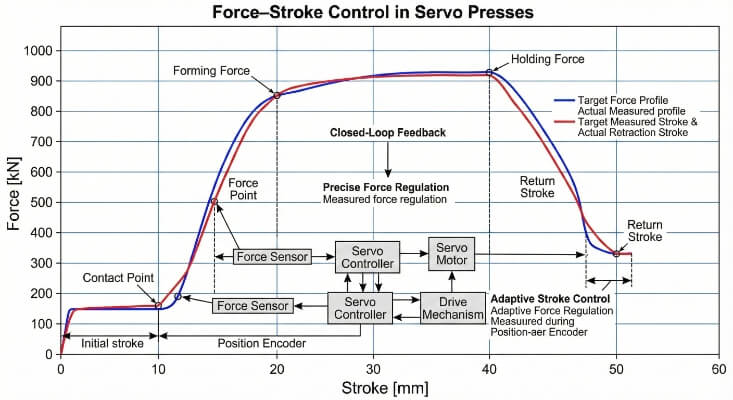Modern product design moves fast. Engineers and manufacturers are constantly under pressure to deliver more parts, with tighter tolerances, in less time. But turning metal sheets into complex parts isn’t easy. Sheet metal stamping solves these problems by fast and cost-effectively making high-volume, precision parts.
This article explains how stamping works, what materials are used, and where it’s applied. Keep reading to learn how this process fits into your next project.
What Is Sheet Metal Stamping?
Sheet metal stamping is a cold-forming method. It shapes metal without heat. A stamping press pushes metal into a die, forming it into a specific shape. The process is quick and repeatable. It suits high-volume production.
The core idea is simple. A punch pushes down onto a sheet of metal. Below, a die supports the material. The shape of the die and punch controls the form of the part.
This action changes the shape of the sheet permanently. The press must apply enough pressure to deform the metal without cracking it. Different cutting, bending, or stretching operations can happen during one press cycle.
Three key elements drive stamping: force, tooling, and motion.
- Force comes from the press. The press must match the strength and thickness of the metal.
- The die shapes the metal. It is a custom tool made for each part of the design.
- The press controls speed and pressure. It can be mechanical or hydraulic.
Together, they form a system that converts flat sheets into precise 3D parts. Each cycle produces the same result. This repeatability is what makes stamping great for mass production.
How Does Sheet Metal Stamping Work?
Sheet metal stamping follows a straightforward process. Each step helps turn raw sheet material into a finished part. Here’s how it works from start to finish.
Step 1: Material Selection and Preparation
The process starts with selecting the right metal. Common choices include stainless steel, aluminum, carbon steel, and copper. The material is usually in coil or sheet form.
Step 2: Feeding the Material
Next, the metal sheet is fed into the press. This can be done manually or automatically. In high-volume runs, coil-fed systems use rollers to feed the metal continuously. For short runs or prototyping, individual blanks are often used.
Step 3: Tooling Setup
Tooling includes the punch and die set. These tools are placed inside the press. The shape of the die and punch matches the part’s design. They determine the final part’s form, holes, curves, and bends.
Step 4: Press Operation
The press pushes the punch into the metal and against the die. This applies force to shape or cut the metal. Depending on the tooling, it may punch holes, bend edges, or form curves—all in a single stroke.
Step 5: Ejection and Part Removal
Once the stroke is complete, the press lifts. The finished part is either ejected automatically or removed by hand. Scraps or excess material are also cleared.
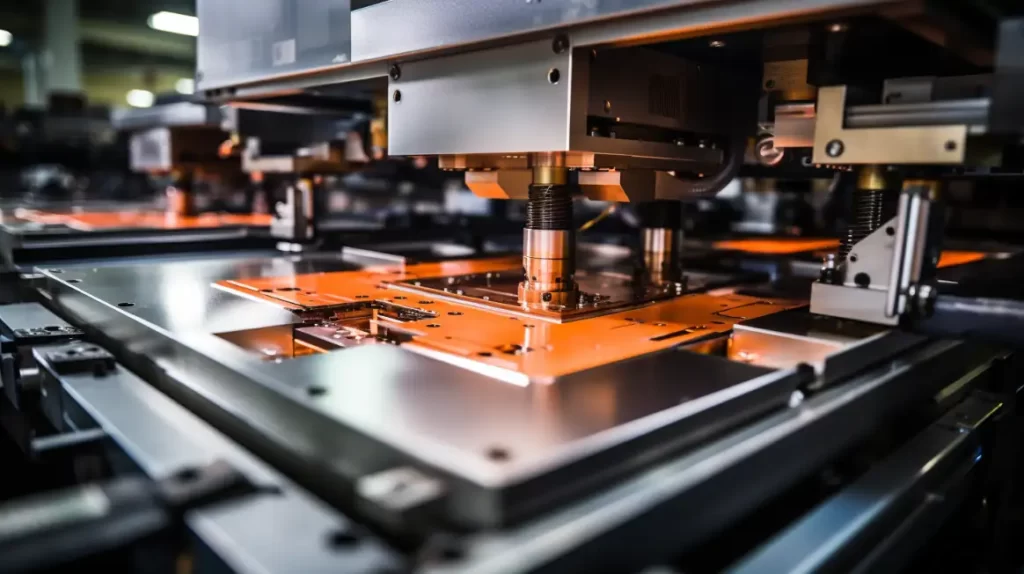
Main Types of Sheet Metal Stamping Processes
Sheet metal stamping isn’t one-size-fits-all. Each method fits different needs based on part shape, volume, and complexity. Below are the most common types used in manufacturing.
Progressive Die Stamping
Progressive die stamping uses a long strip of metal fed through several stations in a single die. Each station performs a different action—cutting, bending, or punching. The part forms step by step as the strip moves forward.
This process is fast and efficient. It’s best for high-volume parts with multiple features. It reduces handling and delivers consistent results.
Transfer Die Stamping
Transfer die stamping works with individual blanks instead of a continuous strip. Robotic arms or mechanical transfers move each blank from one die to the next. Each die performs one operation.
This method is excellent for larger or deeper parts. It allows more complex shaping than progressive dies and suits medium to high production volumes.
Four-Slide Stamping
Four-slide stamping, or multi-slide, uses four sliding tools arranged around the part. These tools simultaneously bend, cut, or form the material from different angles.
It’s ideal for small, intricate parts with complex bends. It’s highly efficient for medium to large batches and reduces secondary operations.
Fine Blanking
Fine blanking produces parts with smooth edges and tight tolerances. It uses higher pressure than standard stamping and often includes extra steps like clamping before cutting.
This process is used for precision parts, especially in automotive and electronics. The clean-cut edges reduce the need for further finishing.
Deep Drawing
Deep drawing transforms flat metal into deep, hollow shapes. A punch forces the sheet into a die cavity, stretching it into a box or cylinder form. It’s used to make containers, housings, and other deep parts.
This process handles parts with large depth-to-diameter ratios. It requires ductile metals like aluminum, copper, or low-carbon steel.
Common Stamping Techniques
Each stamping operation performs a specific task. Some shape the metal. Others remove parts of it. These techniques are often combined to make one part in a single run.
Blanking
Blanking cuts a flat shape out of a metal sheet. The blank becomes the part itself. It’s usually the first step in stamping. Blanking must be precise, since it defines the outer edge of the part.
This method is fast and works well for parts that need tight tolerances and clean edges.
Piercing and Punching
Piercing creates holes or openings in the metal. Punching does the same but may remove more material. Both use a punch-and-die setup to shear through the sheet.
They’re used to make holes for fasteners, ventilation, or design features. The waste material is called a slug and is usually discarded.
Embossing
Embossing forms raised or recessed shapes in the metal without cutting it. It adds texture, logos, or functional details like stiffening ribs.
This technique improves part strength and design. It’s often used for branding or visual effects on covers, panels, and casings.
Coining
Coining uses very high pressure to form fine details into the metal. It flattens and compresses the surface. This helps achieve tight tolerances and crisp features.
It’s common in electrical contacts, coins, and other small, high-precision parts.
Bending and Flanging
Bending changes the angle of a metal section. Flanging creates an edge or lip that sticks out. Both are used to build part geometry or strengthen the structure.
These are basic steps in many stamped parts, especially brackets, frames, and enclosures.
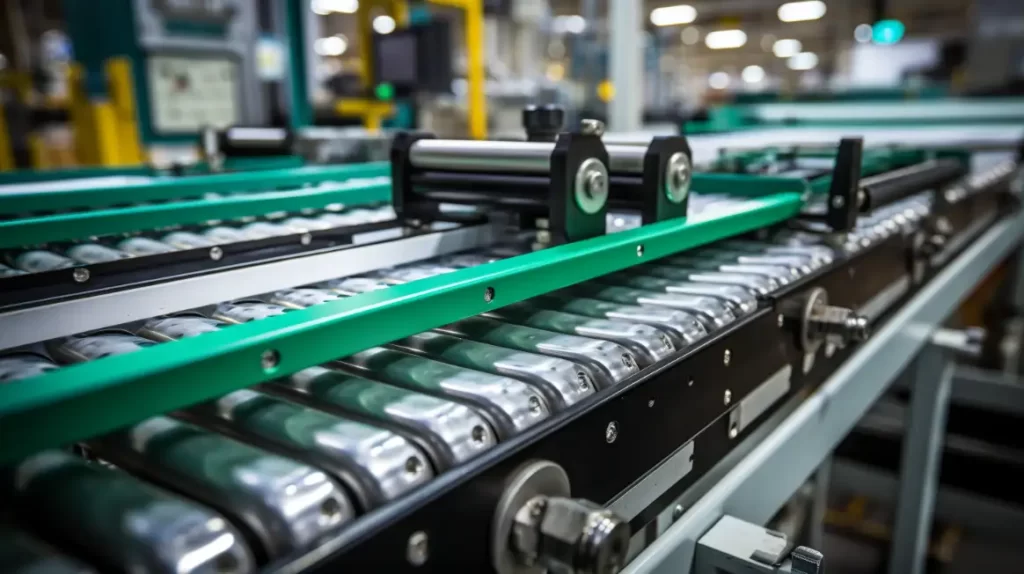
Stamping Press Types and Capabilities
The press is the heart of any stamping operation. Its type and power affect the part quality, speed, and overall cost. Choosing the right media depends on material, part size, and process needs.
Mechanical Presses
Mechanical presses use a motor and flywheel to drive the ram. They deliver fast, consistent strokes. These presses are ideal for blanking, punching, and shallow forming.
They are best for high-speed, high-volume production. However, their stroke depth and force are fixed, which limits flexibility.
Hydraulic Presses
Hydraulic presses use fluid pressure to move the ram. The speed and force can be adjusted. This makes them more versatile than mechanical presses.
They are better for deep drawing and forming thicker metals. These presses are slower but more controlled, which helps reduce part defects in complex shapes.
Servo Presses
Servo presses use electric motors instead of traditional drive systems. They offer precise control over speed, position, and pressure. The stroke can be programmed to suit each job.
This type gives the most flexibility. It combines speed with control, making it ideal for parts that require high accuracy and variable forming forces.
Press Tonnage and Speed Considerations
Press tonnage is the amount of force the press can apply. It must match the material type, thickness, and part size. If the tonnage is too low, the metal won’t form. If it’s too high, tools can be damaged.
Speed affects output and part quality. Higher speeds mean more parts per hour. But too much speed can cause heat, wear, or part distortion. Balancing tonnage and speed is key for a stable, high-quality stamping process.
Die Tooling in Sheet Metal Stamping
The tooling shapes the metal and defines the part. The tooling setup must match the part’s design, material, and volume. Good tooling means better parts, less waste, and faster runs.
Types of Dies: Simple, Compound, and Progressive
- Simple Dies perform one operation per press stroke, like cutting or bending. They are used for low-volume or basic parts.
- Compound Dies handle multiple cuts in a single stroke. They are helpful for parts needing several holes or edge cuts at once.
- Progressive dies combine many steps in one die. The metal moves through stations, forming features step by step. Best for large runs of complex parts.
Die Components: Punch, Die Block, Stripper Plate
- Punch presses the metal into the die. Its shape matches the feature it forms or cuts.
- Die Block holds the shape of the part. It works with the punch to form or cut the sheet.
- Stripper Plate holds the sheet in place and removes it from the punch after forming.
Tooling Design and Maintenance Best Practices
Tooling must be precise, strong, and durable. Use hardened tool steel for long life—design with alignment pins, clearance, and smooth transitions to avoid jams and defects.
Regular maintenance is key. Clean and inspect the tooling often. Watch for wear, cracks, or buildup. Sharp edges must stay sharp. A minor defect in the die can ruin many parts.
Advantages of Sheet Metal Stamping
Sheet metal stamping stands out for its speed, consistency, and cost savings. These strengths make it a top choice for many production lines, especially high-volume parts.
High-Speed Production
Stamping is fast. Each press stroke takes just a few seconds—or less. Progressive dies allow multiple actions in one stroke, speeding things up even more.
Cost Efficiency for Large Volumes
Tooling can be expensive upfront. But once the dies are ready, the per-part cost drops fast. The more parts you make, the lower the unit cost.
Consistent Quality and Repeatability
Each press cycle produces the same shape, size, and finish. Once dialed in, stamping maintains stable quality across thousands—or millions-of parts.
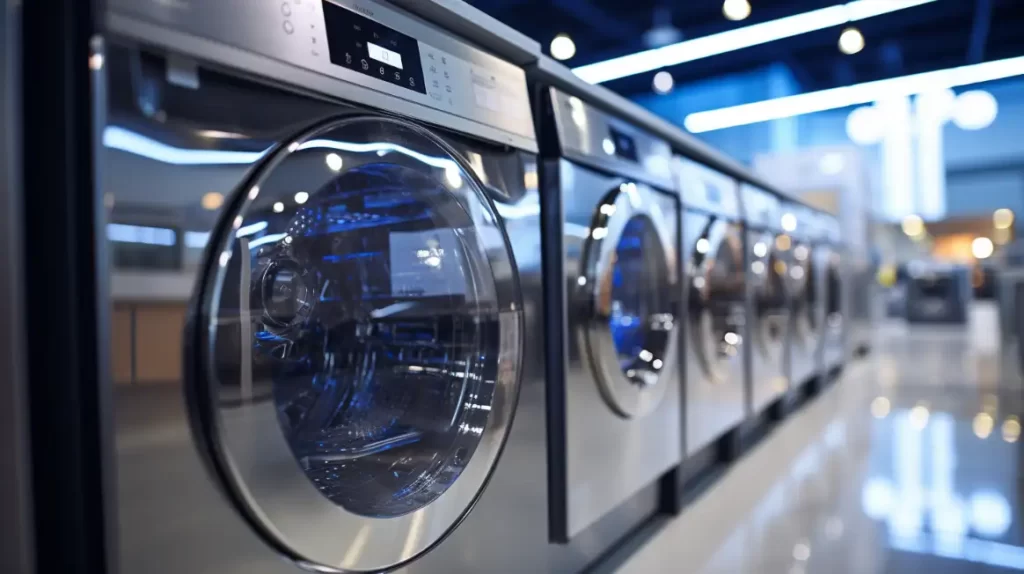
Material Selection for Stamping
Choosing the right material is one of the first steps in stamping. It affects how the metal forms, how long the tooling lasts, and how the part performs.
Commonly Used Metals
- Steel is strong and cost-effective. It’s used in automotive, appliances, and industrial equipment. Low-carbon steel is easy to form. Stainless steel adds corrosion resistance.
- Aluminum is lightweight and corrosion-resistant. It’s suitable for parts in aerospace, electronics, and consumer products. It’s softer than steel and forms easily, but may require tighter process control.
- Copper conducts electricity well. It’s used in electrical contacts, terminals, and heat exchangers. It’s soft, so it stamps cleanly but may stick to tools.
- Brass is a copper-zinc alloy. It offers good strength and corrosion resistance with excellent formability. It’s used for decorative parts, fittings, and electrical components.
How do Material Properties Affect Forming?
Each metal reacts differently under pressure. Softer metals form easily but can stretch or tear. Harder metals resist forming and may crack if overworked. The stamping setup—press force, die shape, and stroke depth—must match the material.
Formability, surface finish, springback, and work-hardening all come from the metal’s properties. Knowing these helps avoid cracks, wrinkles, or tool wear.
Sheet Thickness, Hardness, and Ductility Factors
- Thickness affects press force. Thicker sheets need higher tonnage and stronger tools.
- Hardness impacts tool wear. Harder metals shorten tool life.
- Ductility controls how far the metal can stretch without tearing. More ductile metals handle deeper draws and complex shapes.
Design Considerations for Stamped Parts
Good part design makes stamping easier, faster, and more cost-effective. Poor design leads to tool wear, scrap, or even failed production. These key points help guide better decisions.
Part Geometry and Complexity
Simple shapes are easier to stamp. Complex features—deep draws, tight bends, or odd angles—require more tooling and setup. Design parts with clean lines and smooth transitions. Avoid sharp corners or minimal radii unless necessary.
If a part needs holes, bends, and cutouts, use a layout that supports a smooth stamping sequence. Progressive dies work best when the geometry allows step-by-step forming.
Tolerances and Dimensional Accuracy
Stamping can hold tight tolerances, but it’s less precise than CNC machining. Know where tolerances matter most. Apply tighter tolerances only to critical features to keep costs down.
Allow for material springback, especially in bends. Different metals behave differently after forming. Test and adjust dies based on real-world results, not just CAD data.
Minimizing Waste and Material Usage
Design for efficient material use. Nest parts tightly in the blank. Avoid large cutouts or odd shapes that leave unusable scraps.
Use standard sheet sizes when possible. Also, part orientation should be considered to reduce leftover trim. Less waste means lower costs and faster runs.
Applications Across Industries
Stamped parts are everywhere. The process supports many industries that need strong, precise, and repeatable components made at scale.
Automotive Components
Stamping is a core process in car manufacturing. It makes brackets, frames, body panels, seat tracks, battery covers, and heat shields.
Aerospace Structures
Aerospace uses stamped parts for strength and weight control. Standard items include clips, shields, brackets, and structural panels.
Consumer Electronics Housings
Stamped parts form the outer shells and internal frames of devices like laptops, phones, and home appliances. These parts need smooth finishes and tight fits.
Medical Device Enclosures
Medical products need clean, reliable components. Stamped stainless steel and aluminum parts are used in device casings, shields, and support frames.
Industrial Equipment Panels
Industrial machines often use stamped panels, covers, and brackets. These parts must be strong, durable, and easy to assemble.
Conclusion
Sheet metal stamping is a fast and reliable method to turn flat metal sheets into functional parts. It supports high-volume production, delivers consistent results, and works with various materials. Stamping offers a scalable solution for many industries, from auto frames to electronics housings.
Need custom-stamped metal parts for your project? Contact us today for a fast quote and expert advice from our experienced engineering team.
Hey, I'm Kevin Lee

For the past 10 years, I’ve been immersed in various forms of sheet metal fabrication, sharing cool insights here from my experiences across diverse workshops.
Get in touch

Kevin Lee
I have over ten years of professional experience in sheet metal fabrication, specializing in laser cutting, bending, welding, and surface treatment techniques. As the Technical Director at Shengen, I am committed to solving complex manufacturing challenges and driving innovation and quality in each project.

